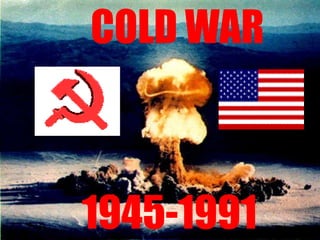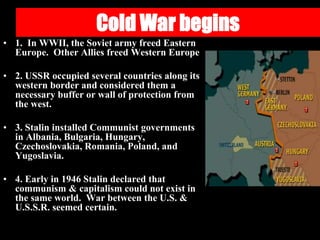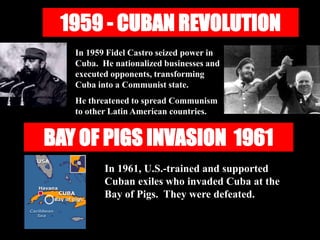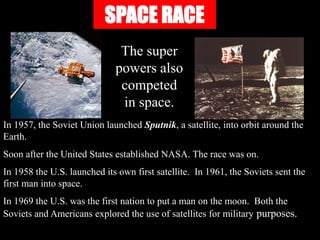The Cold War was a period of diplomatic hostility between communist nations led by the Soviet Union and capitalist nations led by the United States that began in 1945 after World War 2. Both sides built up their military forces and spread their political ideologies to other nations through propaganda, economic aid, and involvement in regional conflicts. The arms race and space race increased tensions as both nations developed increasingly powerful weapons and competed to achieve milestones in space exploration. By the late 1980s, the Soviet Union's economy had failed and independence movements weakened its control, leading to its collapse in 1991 and victory for the United States in the Cold War.


























